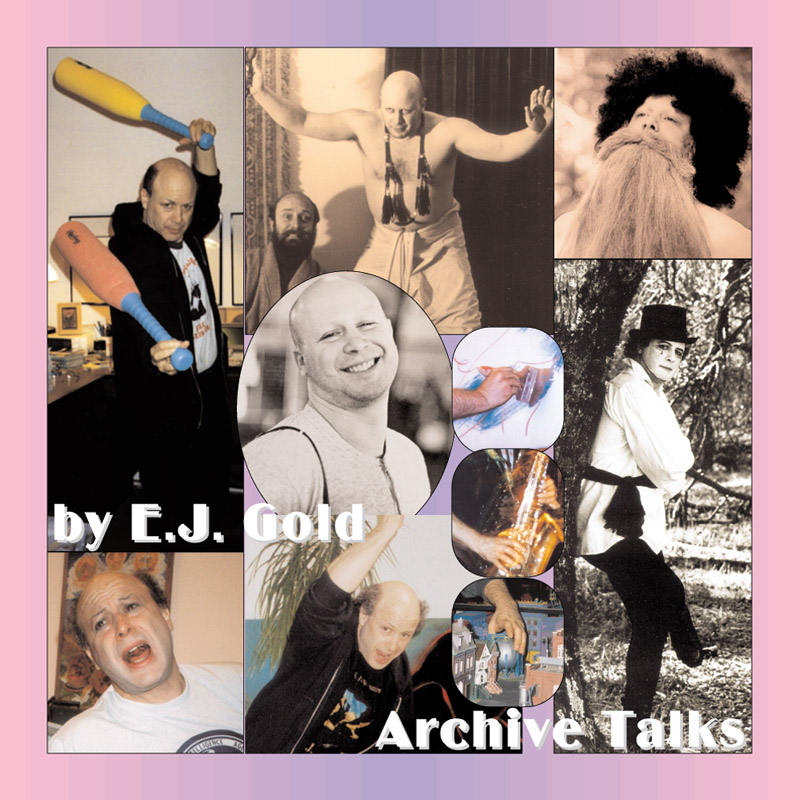

CDT227
Labyrinth Voyager I (WWWC I-5)
WWWC
This talk is the soundtrack from the original video tape by the same name. An opportunity to observe how questions reveal themselves - a study worth making.
Synopsis
The conversation is a free-flowing, humorous, and at times philosophical dialogue touching on themes of human behavior, existential curiosity, and the contrast between everyday primate existence and the idea of "labyrinth voyaging," which involves higher-dimensional exploration. Through satire, wordplay, and surreal asides, the speakers explore ideas such as self-awareness, the cyclic nature of human moods, and the conflict-driven nature of the human mind. Alongside these musings are seemingly tangential but metaphorically rich segments involving styrofoam, dishwashing, shamanistic mascots, and branding chickens.
Summary
The discussion begins with a playful, absurd exchange about the significance of styrofoam and its relationship to time-saving and higher-dimensional exploration. This sets the tone for a meandering yet insightful conversation that oscillates between wit, satire, and deep reflection.
A recurring theme is the tension between primate existence—filled with routine conflict—and the possibility of transcending it through understanding and participation in a greater structure. The speakers dissect historical and societal beliefs on human nature, evolution, and intelligence, including critiques of Darwinian natural selection and the satirical concept of "marching morons," which suggests that societal advancement isn't necessarily linked to intelligence.
The concept of shifting one's internal focus is explored in relation to personal moods, seasonal shifts, attentiveness, and the perceived futility of attempting to "fix" conflicts generated by the self-perpetuating nature of the human machine. The conversation also touches on sensory deprivation, Heisenberg's uncertainty principle, and the satirical idea that evolution could be guided by reflex rather than intentional effort.
The discussion concludes by identifying a paradox: exercises intended to transition one from a conflict-driven primate existence to a labyrinth voyager’s life are necessary, yet they alone do not effect the change. Instead, the transformation happens unexpectedly, in a way that parallels mastering a physical skill. This unresolved tension forms the final reflective note: human beings are influenced into evolving by forces beyond their immediate comprehension.
Keywords and Key Phrases
- Labyrinth voyaging
- Primate consciousness
- Conflict-driven mind
- Evolution by reflex
- Transformational apparatus
- Mental masturbation
- Stimulus attenuation tank
- Marching morons
- Running iron
- Chicken branding
- Moons and seasonal moods
- Styrofoam metaphysics
- Self-perpetuating conflict
- Higher-dimensional exploration
- Shamanistic Care Bear
- Purina Worm Chow
- Metaphysical dishwashing
Graphic Prompt
"A surreal, dreamlike landscape featuring a labyrinth stretching into multiple dimensions, with a humanoid figure standing at the entrance, torn between a tribal, primal aesthetic and a futuristic, ethereal glow. In the background, echoes of evolutionary forms—monkeys, humanoids, and abstract beings—merge into swirling portal-like structures. Elements of shamanistic symbols, cosmic patterns, and enigmatic objects like a floating styrofoam tray or an ancient carved totem add to the mystical atmosphere. The style blends surrealism and science-fiction illustration with a touch of psychedelic mysticism."



